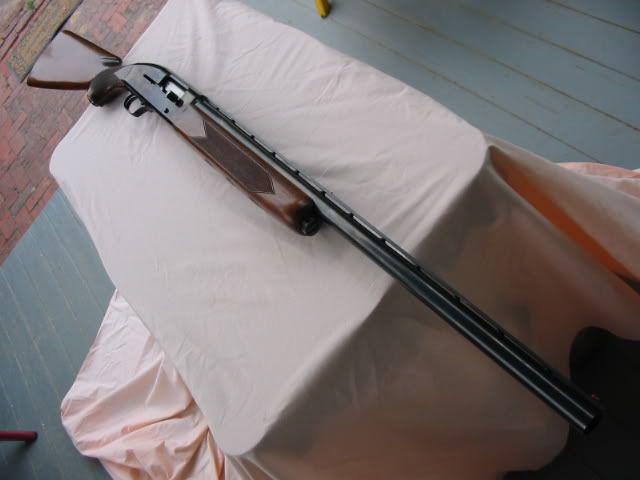improperly modified stocks
the diagram that i posted a few posts back is out of the winchester shop manual. it shows the location of where the washers should go.
the problem, (is as with many winchester shotguns,) is so many have been parted together, stripped for re-sale of parts on ebay and just plain frankengunned, that you cant tell just by year or serial number ranges anymore, to know whether or not the mod has been done to your gun.
in a perfect world, as original owner, 70 years ago, with authorized winchester repair facilites......the correct way to modify an early model 50 stock BEFORE the mod was done to all guns off the assembly line, was as follows:
- have gunsmith order the 2 washers.
- have the gunsmith remove wood the equal thickness of the 2 washers from the stock cavity.
- have gunsmith install the 2 washers.
- reassemble gun modified.
NO CHARGE
the mod instructions were dated july 1957, so that means all guns prior to 1957 needed the mod.
fast forward to modern time.
so, is the gun you have in your hands in original condition? meaning, can you confirm it wasnt sold to you as a parts gun? if you can, and if your gun is pre 1957, it most likely needs the washers. if its post 1957, it was done from the factory on all new guns.
problem.
if your gun is a 'gunbroken or a fleebay' wood stock special, the seller could have built or sold the gun from parts, mixing stocks up on guns that are post 57. there is no way to know unless you mike out the wood inside.
heres what happens.
if you put a stock on a gun that has not been modified for washers, its too short inside and it'll loosen. when it loosens, people buy the washers, but dont bore out the wood for them to fit. so now they got 2 washers in the unmodified wood stock. they go to tighten up the stock, but because they changed the OL of the recoil spring tube, the recoil spring and op rod recoils back to where its suppose to be, but there is a gap between the properly adjusted cap and the safety clip. hazard? you now have a gun set up to recoil too far as the cap loosens out, causing the bolt assy to travel too far back cracking the receiver as the cap turns and loosens from recoil after recoil until it stops as it hits the clip. and double those odds of cracking if the spring is old and worn.
the holes for the clip were drilled where the cap is suppose to be, but the extra wood still inside, with washers installed, causes the stock to tighten too soon, making the cap never reach the clip area on the tube when adjusted properly.
if you get washers and assemble your gun, if there is a gap between the clip and top of the cap after the gun is PROPERLY TIMED with 3/16" play in the bolt handle (adjusted iaw the manual,) it means your wood wasnt bored. you either must have it bored or do the bobski quick fix.
when you install the new washers AND REPLACE THE RECOIL SPRING WITH A NEW ONE, take either a dime or penny and place it over the top of the cap and under the clip
after you make the proper adjustment. this will force the cap from advancing outward. it will make the cap stay where it is properly adjusted deeper inside the tube and itll put pressure on the clip forcing the cap from backing out.
hope this helps.
![Image]()


